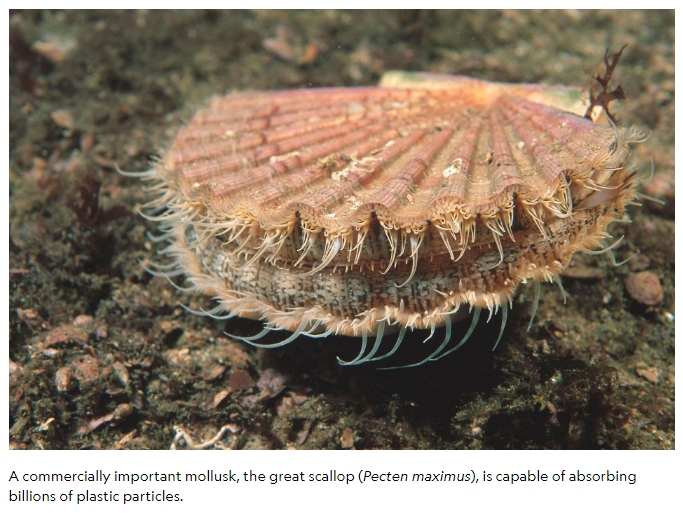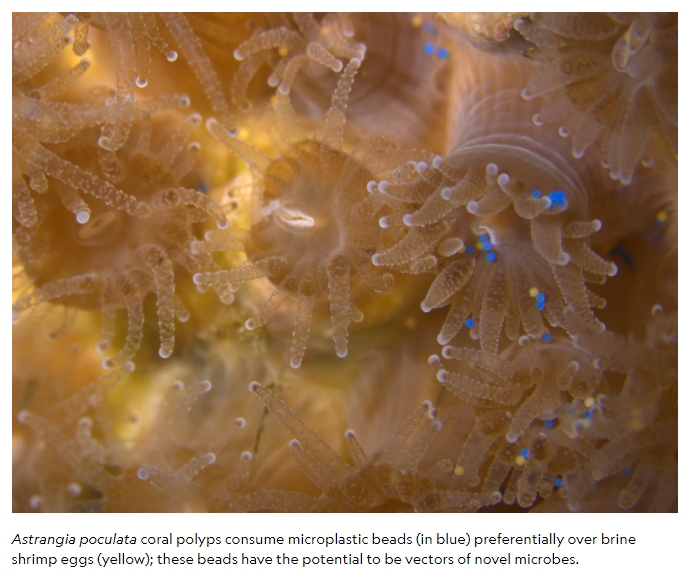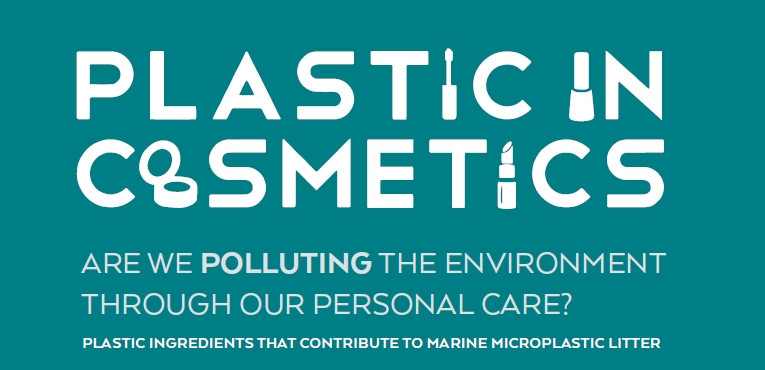Microplastics in Cosmetics – Are We Polluting the Environment through our Personal care?
Plastic ingredients that contribute to marine microplastic litter.
Spherical or amorphic plastic particulates are used as ingredients in personal care and cosmetic products (PCCPs) for a variety of purposes such as sorbent phase for delivery of active ingredients, film formation, exfoliation, viscosity regulation and many others. ‘Microbead’ is one of many terms applied to plastic PCCP ingredients; they may also be called microplastics, microspheres, nanospheres, plastic particulates etc. A large number of plastic materials are currently being applied in PCCPs. Since their appearance in cosmetics 50 years ago, plastics have become widespread in cosmetic and personal care formulations. Read more here: Plastics in Cosmetics (link to PDF)
Sea scallops suck up billions of plastic particles (link to article on National Geography Website)
These corals choose to eat plastic over food (link to article on National Geography Website)
Environmental SpectatorTM
The environmental spectator is a web based technical information service that is intended to provide on information on topics related to the environmental impact of raw materials, and finished products used in the personal care market.
